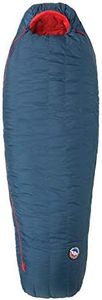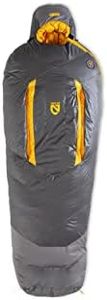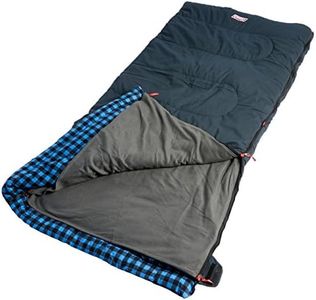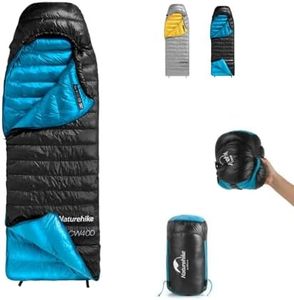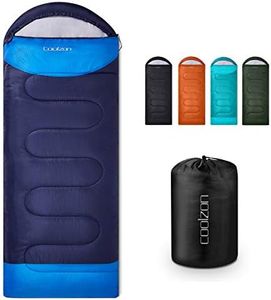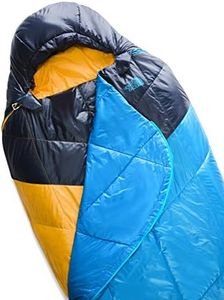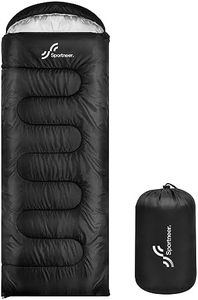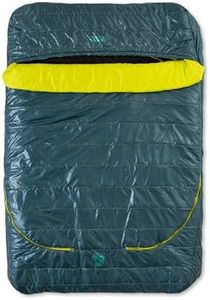We Use CookiesWe use cookies to enhance the security, performance,
functionality and for analytical and promotional activities. By continuing to browse this site you
are agreeing to our privacy policy
10 Best Camping Sleeping Bags
From leading brands and best sellers available on the web.Buying Guide for the Best Camping Sleeping Bags
Choosing the right camping sleeping bag can make a big difference in how well you sleep outdoors. The best sleeping bag for you depends on where, when, and how you plan to use it. You’ll want to think about factors like the climate you’ll be camping in, the season, how much you value portability, and your own comfort preferences. Understanding the most important specifications will help you match a sleeping bag to your personal needs and enjoy a good night’s sleep in camp.Temperature RatingThe temperature rating of a sleeping bag tells you the lowest temperature at which it is intended to keep you warm. It’s important because it helps you avoid being too cold or too hot during your trip. Ratings usually fall into three segments: summer (around 35°F/1.5°C and above), three-season (20-35°F/-6 to 1.5°C), and winter (20°F/-6°C and below). Choose a rating that matches the coldest temperatures you expect to face, and keep in mind that people who get cold easily may want a bag rated for even lower temperatures than the forecast.
Insulation TypeSleeping bags can be filled with down (natural feathers) or synthetic fibers. Insulation is important because it affects how warm, lightweight, and compressible the bag will be. Down is light and compresses well, making it great for backpacking, but loses warmth if it gets wet. Synthetic is bulkier but stays warmer when damp and is usually less expensive. Choose down if you want the lightest bag and can keep it dry; pick synthetic if you expect wet conditions or want easier care.
ShapeSleeping bags come in various shapes, such as mummy, rectangular, or semi-rectangular. The shape matters because it affects warmth and comfort. Mummy bags are narrow and hug the body, keeping you warmer and lighter for backpacking. Rectangular bags give more space to move but can be less efficient at retaining heat, often used for car camping. Semi-rectangular bags balance warmth and wiggle room. Choose based on your space needs and the type of camping you do.
WeightWeight refers to how heavy the sleeping bag is, which is important when carrying your gear over long distances. Backpackers often want lightweight bags, generally under 3 pounds (1.4 kg), while car campers can afford heavier bags. Choose a lighter bag if you're hiking far with your gear, but if you’re driving to your campsite, weight is less of a concern and you might opt for a larger, more comfortable bag.
Packed SizePacked size tells you how small the sleeping bag becomes when it’s rolled up for travel. This is important for saving space in your backpack. Smaller packed sizes are usually better for backpacking, while car campers may not need to focus on this as much. If you have limited space, look for a sleeping bag that compresses well.
Shell MaterialThe shell is the outer fabric of the sleeping bag, usually made from nylon or polyester. Shell material affects durability and water resistance. Some shells have waterproof coatings to protect against dew or dampness. Consider a sturdier, water-resistant shell if you camp in wet or rough environments, or if you sleep outside without a tent.
Zipper FeaturesZippers affect ventilation and ease of use. Some sleeping bags allow you to open them up fully like a blanket, while others have two-way zippers for more venting options. Look for anti-snag zippers for less hassle. If you want flexibility in how you regulate temperature, or if you like to stick your feet out, check the zipper setup before buying.


